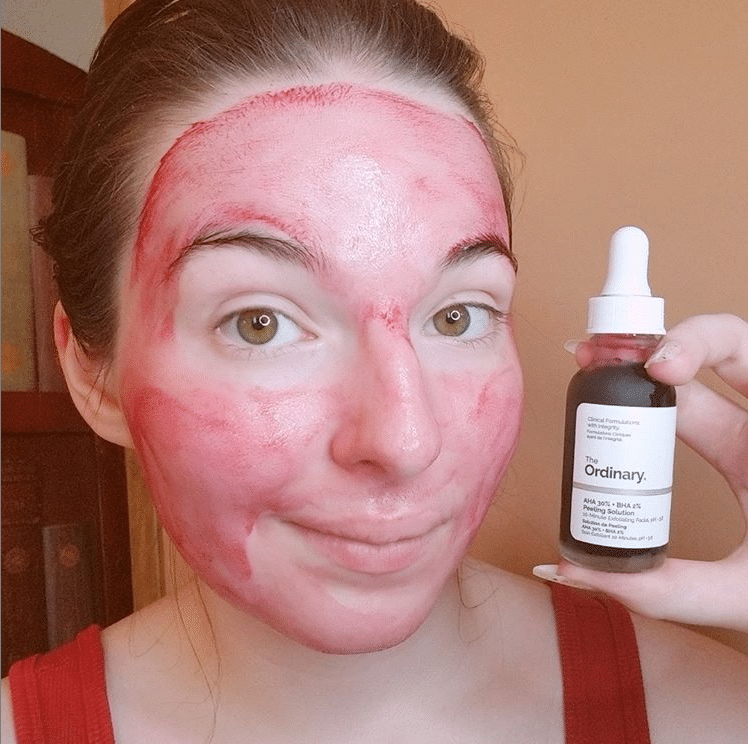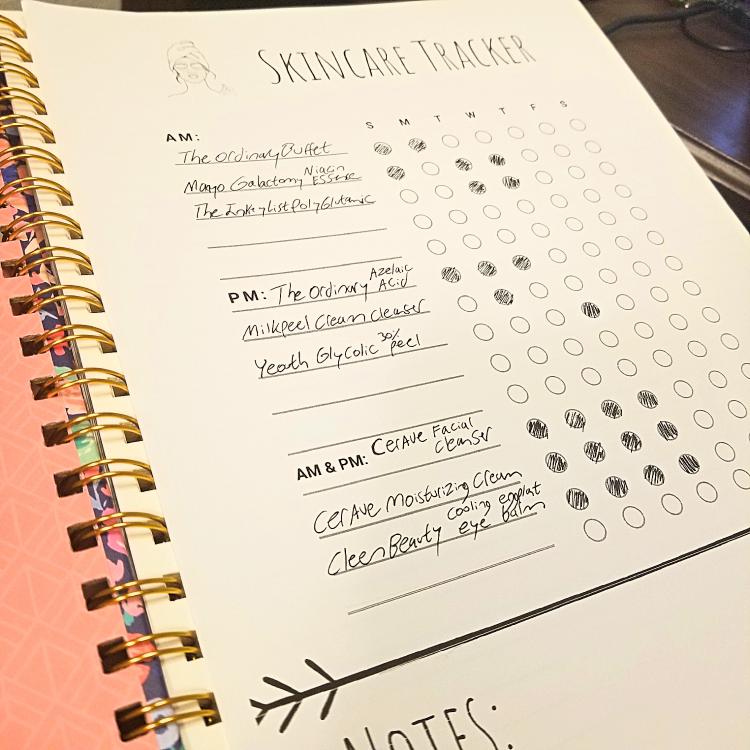Chemical exfoliants are being included in a quickly increasing amount of mainstream skincare products. AHA and BHAs are wonderful skincare ingredients but it’s important to brush up your knowledge on how to protect your skin from sun damage when using these sensitizing acids.

This article contains affiliate links; if you purchase a product through my link it will send some spare change my way to keep this slice of the internet up and running.
Do AHAs & BHAs Increase Sun Sensitivity?
A study was completed to determine if BHAs and AHAs cause increased UVB skin damage by applying glycolic acid (a AHA) and salicylic acid (a BHA) to 14 volunteers daily for three and a half weeks.
The treatment done with glycolic acid resulted in increased sensitivity and sunburn cell formation. This water-soluble AHA exfoliates the skin and removes protective upper layers of the skin. These thinned layers of skin then become more prone to sun damage.
Salicylic acid is an oil-soluble BHA and lightly exfoliates the surface of the skin on its way to penetrating deeper in the pore to exfoliate excess oil and sebum.
The test sites treated with salicylic acid did not show any increases in sun damage! Research has actually shown that the BHA salicylic acid can be photoprotective.
Do You Need Apply Sunscreen With BHAs?
Salicylic acid is by far the most common BHA used in skincare formulations. You do not have to wear additional sunscreen after using salicylic acid as it has been proven to protect the skin rather than increase sun damage. The mechanics of exactly how SA reduces sun sensitivity is not well understood but it’s believed that its inflammatory properties help to reduce sunburn.
But nethertheless, you should wear SPF daily no matter what skincare products you are using! It is much easier to prevent sun damage than to try to repair years of skin damage caused by a lack of using sunscreen.
Do You Need To Use Sunscreen After Applying AHAs?
Alpha hydroxy acids like glycolic acid have been shown to increase the risk of sun damage and can actually increase pigmentation caused by sun exposure. It is important to always use a sunscreen with an SPF of 30 or above after using any AHA in your skincare routine. The Rohto SKIN AQUA UV Super Moisture SPF50 is my holy grail sunscreen and I highly recommend it to anyone shopping for an SPF.
I recommend attempting to only use chemical exfoliants during your nighttime skincare routine. This limits your skin to sun exposure while using these sensitizing products and you can then focus on hydrating and protective formulas during the daytime.
Can you use AHA & BHA in the morning?
It is recommended that you save chemical exfoliants like salicylic acid and glycolic acid for your nighttime skincare routine, but it is not strictly mandatory. As long as you apply a suitable SPF afterwards you can safely use AHA and BHAs during the daytime.
This study done on the effects of AHA found that continual use of AHAs can cause your skin to burn when exposed to UV light up to 24 hours after the last application. It’s very important that you consistently use sunscreen if you start using a chemical exfoliant and continue to use it even if you haven’t applied the product that day, because your skin is still recovering from the exfoliation and is more prone to burning.
Can I use AHA in the morning and BHA at night?
You can safely alternate between using AHA and BHA during your morning and nighttime skincare routines. As long as you have a suitable SPF in your daily skincare regime you can use either a BHA or AHA with no ill effects.

One word of caution, take care that you are not using strong percentages of multiple chemical exfoliants more than once per day. It is not necessary to use both a strong AHA and a strong BHA in the same day, your skin simply does not need to be exfoliated that often and it will likely lead to skin irritation. If you want to use both acids simultaneously I highly recommend The Ordinary AHA 30% + BHA 2% Peeling Solution. This should only be used once a week at the most and gives amazing results!
Excess exfoliation is one of the easiest ways that you can accidentally damage your skin barrier. Take a few minutes to plan out when you want to use each product and consider keeping a skincare planner to keep track of how often you’re reaching for each product. This is an easy way to look back and see which products are working and also helps you decide when to ramp up the frequency of application. I have a free printable skincare tracker here!

